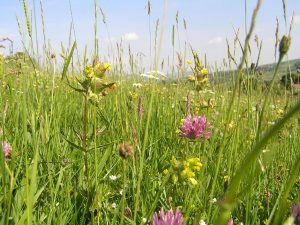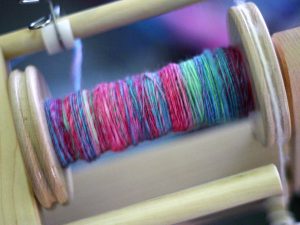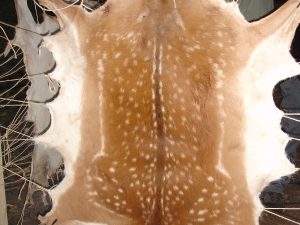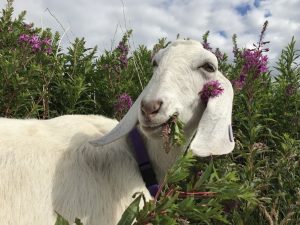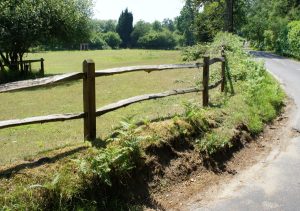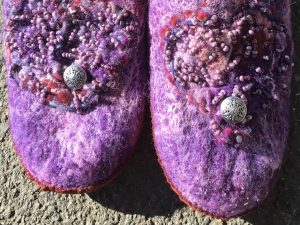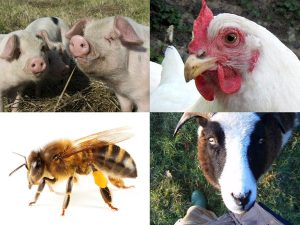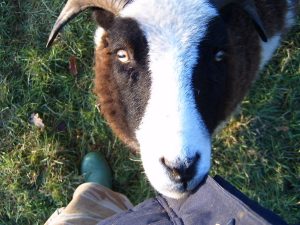Alpacas - introduction
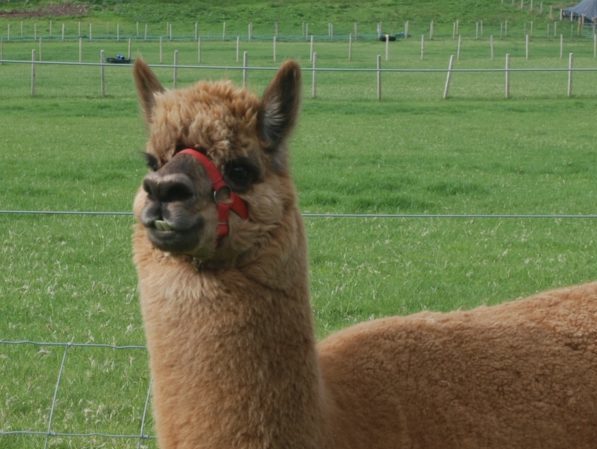
” If humans do not take good care of the alpacas, their disappearance will foretell the end of the world.” – ancient Andean legend
Contents
What are alpacas?
Alpacas, along with camels and llamas, are members of the Camelid family and are the domesticated descendants of the vincuñya of the Andes. Alpacas have evolved to live in alpine areas at high altitude so are extremely hardy. They are grazing animals and naturally live in family groups of one male and around 10 females. Domesticated in Peru by 6,000 years ago, they were highly prized for their fine fleece, as well as providing meat, hide and fuel.
Today alpacas are still highly prized for their fleece. The majority are still kept in South America, but increasing numbers are kept in North america, Australia and the UK. This increase probably owes something to the docile nature, trainability and overall cuteness of alpacas; in the UK especially, Alpaca farmers often make as much of their income from alpacas as visitor attractions and therapy animals as from their fleece.

An alpaca in Peru (pic: whl.travel, creative commons).
What are the benefits of keeping alpacas?
Alpacas produce a silky, lustrous fibre, both softer and warmer than sheep’s wool. Alpaca wool doesn’t itch and is ideal for people who are allergic to sheep’s wool. There is also an argument that they offer a less environmentally-damaging way to produce fibre than sheep. Their efficient metabolism does mean they need less land, and the way they graze and the softness of their feet may be less damaging to the pasture. At the very least they can produce natural fibre locally on a small scale. An alpaca can live around 20 years, producing fleece every year. You can also use their dung for compost, or even fuel; they (very usefully) always poo in the same place in the field making a nice easy pile to collect.
Alpacas can be a good option for those with a small amount of land; it can be difficult to make a profit from selling even the valuable alpaca fibre, but the attractiveness and good nature of the alpaca can provide supplementary income. As well as the increasingly popular alpaca treks, alpacas are used for educational visits to schools and community groups, and therapeutic visits to hospices and nursing homes. A good income can also be made from selling stock.
Many people fall in love with alpacas; they are undoubtedly cute, cuddly and their nature makes them easy to train and a delight to handle. They also make good guard animals, protecting sheep and poultry from foxes and dogs.

A herd of male alpacas at Bobcat Alpacas.
What can I do?
Getting started
The community of alpaca breeders in the UK are friendly and helpful. Many alpaca farms welcome visitors and will be happy to share their knowledge. Visiting a few alpaca keepers and chatting to them about what is involved is a great way to get started. If you are considering breeding alpacas, or producing fibre, it is especially important to get the advice of an experienced person to ensure you obtain good quality stock. You can find local groups courses and breeders through the British Alpaca Society.
Alpacas are social animals so you will always need to keep at least two. Males will happily live together in single sex herds and, if you are not intending to breed, wethers (castrated males) are likely to be the most affordable option. If you are intending to breed them you will need to keep more than one male. You are likely to want to separate your male from the females to control breeding, and your breeding male will need a companion.

A male Huacaya alpaca.
Grazing and shelter
On good quality grass you can keep 5 alpacas on an acre. Alpacas are extremely hardy; their thick fleece is designed to protect them from freezing nights high in the Andes. Alpaca fleece is not water-repellent like a sheep’s but is so thick and dense that rain does not penetrate it. They can therefore easily live out all year round, but should be provided with an open-fronted field shelter which they can use at will. Alpacas can jump but rarely try to escape and do not challenge fences; Stock fencing of 4 feet high is sufficient.

A 2-day old baby alpace, or ‘cria’ (pic: Bobcat Alpacas).
Feeding
Alpacas need grass and good quality hay or haylage, and require little supplemental feeding. Females in late pregnancy or youngsters may require some additional concentrated feeds. Compound feeds, specifically formulated for alpacas can be purchased, or they can be given sugar-beet, alfalfa or small amounts of grains. Grass nuts are often given as a treat and are useful to train them to come running at the sight of a feed bucket.
Alpacas need daily vitamin and mineral supplements specifically formulated for them. In the UK they also need vitamin D supplements, either orally or by injection, every 6 – 10 weeks depending on the method used. Like all livestock, they should always have access to plenty of clean drinking water.

A Suri alpaca at Bobcat Alpacas.
Keeping alpacas with other animals
Alpacas generally mix well with other livestock and are often kept as guard animals, however, they should always be allowed the company of their own kind. If alpacas are kept with sheep or cows extra care should be taken to monitor the parasite burden of the pasture (see below). Alpacas can be infected with the same intestinal parasites as both sheep and cows. Alpacas may even be more susceptible to these parasites as they are less prevalent high in the Andes, so alpacas have not had to evolve resistance to them.
Fibre production
Alpaca fleece produces a very soft, silky fibre which is also valued for its lustre or sheen. Suri Alpaca fibre, in particular, has a deep lustre and handles like silk rather than wool. Many small-scale alpaca keepers, if they are not processing the fibre themselves, sell the fleeces to hand spinners. Others send the fleece to small mills for processing. These mills will often process individual fleeces allowing you to sell yarn from a specific alpaca in your herd.
Alpaca fleece quality is evaluated on 5 aspects: fineness, density, crimp style, uniformity and lustre. Breeding pairs will often be chosen by matching an alpaca weak in one of these aspects with one strong in the same. So learning to assess this is important if you intend to breed alpacas for fibre production. The finest fleece will be produced by the youngest alpacas and the quality will gradually decrease with age. Alpacas are sheared annually between late May and late July. This is usually done with the alpaca lying on its side and requires two people: a handler and a shearer, and takes a few minutes.

Alpaca yarn from individual animals (pic: Bobcat Alpacas).
Health
Alpacas are generally hardy and healthy, tending to suffer from fewer problems than sheep for example. It is important to check your animals every day and become familiar with their normal behaviours. Alpacas have a reputation for being stoical, making it difficult to spot problems early unless you know your herd well. As with all livestock, make sure you have a good vet who can be contacted in an emergency.`
Alpacas suffer from many of the same intestinal parasites as sheep and cows. Good pasture management can help prevent this becoming a problem. Research pasture rotation systems, where areas of grazing are rested for periods of time. The alpacas will have helpfully left all their poo in one big pile – you should also remove this from the pasture.
It’s important not to treat your animals for worms more often than necessary, as this can lead to resistance to the medications. Consider conducting regular faecal egg counts to monitor the parasite levels in your herd and only treat when necessary. You can now easily buy kits to do this yourself, or you can send faecal samples to a lab who will do it for you.
You need to trim alpacas’ toenails every 10-12 weeks if they’re always on pasture, less often if they regularly walk on rough surfaces. You should also check them for lice regularly. Annually, your alpacas should be vaccinated for clostridial diseases, be sheared and have their teeth checked.
Alpacas guard and play with lambs
Meat production & slaughter
It is worth knowing, given the strong community there is among alpaca keepers, that many alpaca breeders are strongly against the use of alpacas for meat production and do not wish to see alpacas bred for this purpose. Abattoirs may not be used to dealing with alpacas and may be unwilling to take them, especially in small numbers.
If you do plan to raise meat alpacas for consumption by yourself and your immediate family, you can dispatch animals yourself provided it is done humanely. A shotgun or a single shot humane killer are most commonly used. Other guns can be used but come with more safety and welfare concerns. See the Humane Slaughter Association for more information. It is highly recommended you complete training in humane slaughter before undertaking this task. You should also ensure you have an appropriate firearms license.
If you plan to sell your meat you will need to send your alpacas to a slaughterhouse. You can then either take on the butchery yourself or pay extra for the slaughterhouse to do it for you. If you do it yourself, you will need to follow hygiene regulations and have your premises inspected by Environmental Health on a regular basis. Contact the Food Standards Agency for further information.

A herd of female alpacas at Bobcat Alpacas.
Paperwork
If you keep alpacas, you need to register the land where you’re keeping them with the relevant agency, which depends on where in the UK you live. You do not need a herd number and there are currently no regulations in terms of identifying and tagging your animals. There are also no regulations on recording the movement of animals on and off your holding, though there are voluntary schemes you can sign up to. It is likely this will change in the future, so do check. See DEFRA’s guidelines for more information.
Specialist(s)
Thanks to Bob of Bobcat Alpacas for the information.
The specialist(s) below will respond to queries on this topic. Please comment in the box at the bottom of the page.
 Bob took a new career direction when he retired from the civil service, and now runs Bobcat Alpacas – an alpaca farm with an emphasis on producing high-quality fleece. While Bob’s primary focus is on caring for and breeding his alpacas and the annual harvest and processing of their fleece, his business also offers alpaca trekking and educational and therapeutic visits.
Bob took a new career direction when he retired from the civil service, and now runs Bobcat Alpacas – an alpaca farm with an emphasis on producing high-quality fleece. While Bob’s primary focus is on caring for and breeding his alpacas and the annual harvest and processing of their fleece, his business also offers alpaca trekking and educational and therapeutic visits.

